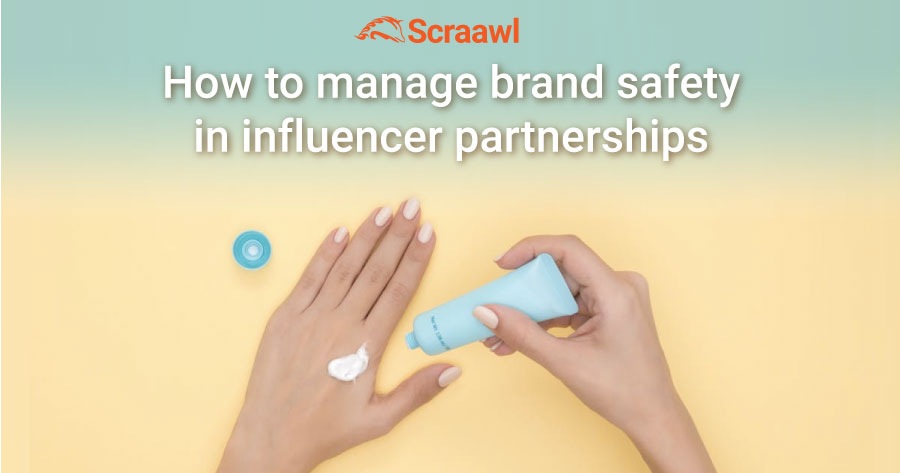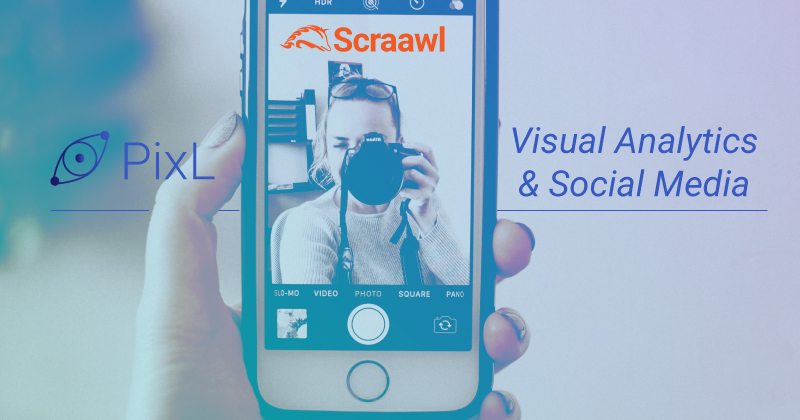According to a recent report by Reuters, global spend on digital marketing has now reach an estimated total of almost $100 billion. The rise in spending has been partially attributed to industry concerns about brand safety. Social platforms have struggled to give full visibility into ad placement. Demands for influencer ad transparency have increased. Accusations of fraud and confusion about true return on investment (ROI) abound. In response, major companies like Unilever are bringing marketing and analytics in house in order to increase transparency in influencer partnerships, to better monitor ad placement on social, and to fully track ROI. In our previous blog, we touched on How to Detect Social Bots for Brand Monitoring. In this blog, we’ll take a look at balancing the many benefits of influencer marketing with greater transparency.
The oft cited advice for brands when working with influencers goes like this: make sure you vet thoroughly before you work with someone. This is not a very helpful brand safety strategy for incidents after the fact. The truth is, even when a brand has done its due diligence, there is still the chance that something may come up. Or as has been the case for the beauty industry, the whole community of influencers may go through a scandal.
For context, in August of 2018, viewers saw a dizzying array of Tell-All videos from YouTube beauty influencers. It all started out with Makeup Geek founder Marlene Stell talking about the amount that influencers are paid. And equally dizzying, there have also been reports of how influencers are paid to bash other brands, a reported amount of up to $75,000. Questions of disclosure, questions of payscales, and questions of integrity are now circling the beauty influencer community. And there have been effects on the brands associated with these YouTube personalities.
We took a look at a few different brands and influencers to see how they handled brand safety strategy. We found that there are effectively three routes that can be taken if a public relations snafu occurs or, as they say, “tea” has been spilt:
1. Cut ties immediately
Around the same time Marlene Stell spoke about influencer payments, there were also reports of beauty influencer Laura Lee and past racist tweets. It was estimated that she lost half a million YouTube subscribers and that her current number of followers now falls just below 4.5 million. Citing Polygon’s calculations, Vox notes that a loss of 200,000 followers could cost Lee about $25,000 per year. Vox reported that with those numbers in mind, “Lee’s nosedive could mean a loss of approximately $65,000 per year,” just from the loss of subscribers alone.
To calculate the loss of potential brand deals is a different matter. According to Allure, Laura Lee was also removed from a number of beauty brand websites including Ulta, ColourPopCosmetics, and BoxyCharm. According to the article and to the Makeup Geek video, each one of those brand partnerships was potentially worth $50k to $65k per post. Therefore, Laura Lee may have lost about $195,000 in partnership deals in total. We can only speculate from the outside, as the cost of influencer partnerships do vary widely according to reach and according metrics set by each unique partnership. With each of the brands listed above, it would seem they went for the cut-ties approach to managing a partnership snafu on social media.
2. Work with the influencer to rehabilitate the image
What do Jeffree Star and Elon Musk have in common?
While cutting ties with an influencer may be option for some brands, it is worth noting that the likelihood that a brand will either cut or support an influencer very much depends on how closely intertwined the two are. When similar accusations of racism were leveled at another beauty influencer Jeffree Star, as the head and also the face of his makeup company, there was very little speculation as to whether he would step down. Again, it is dependent on the visibility and the connection of these influencers to their respective brands.
And while seemingly an unlikely comparison, much of the same can also be said about Tesla founder Elon Musk. In some ways he too is a social media influencer, riling up fans and foes alike through his Twitter account, often leaving his companies to deal with the fall out. Most recently Musk tweeted that he would take Tesla private and had the funding “secured”. He was then fined by the SEC and forced to step down as chairman but remains CEO. While Musk has not fully stepped away from Tesla, there will no doubt be a strong PR push to rehabilitate his image, especially since his own personal brand is so synonymous with Tesla, Hyperloop, SpaceX, etc.
For Jeffree Star, he released a video where he addressed his past racist remarks and also participated in a four part documentary series by another YouTuber known as Shane. Shane’s interviews with Star, in which Star opens up about his past and what happened, appeared to have helped to change public opinion about the controversial makeup guru.
The tweets of these social celebrities and company founders have profound effects on their respective industries. Jeffree Star and Elon Musk are two founders that are too entwined with their brands to ever fully be cut off. A brand must balance partner relations and decide when, and how to cut ties. If not, the option is to rehabilitate that image over time or to lean into the controversy.
3. Lean in and dig deep
Believe in something, even if it means sacrificing everything. #JustDoIt pic.twitter.com/SRWkMIDdaO
— Colin Kaepernick (@Kaepernick7) September 3, 2018
The final brand safety strategy in the wake of an influencer blow-up is to lean in and dig deep. Perhaps the most timely and controversial example of this is Nike’s continuous endorsement of and full investment in Colin Kaepernick. Colin Kaepernick is not an influencer in the traditional social media sense, instead making a name for himself first with as a quarterback in the NFL.
Due to his refusal to stand during the national anthem, Nike was very close to cutting Kapernick from his Nike sponsorship. But unlike the other examples from above, Kapernick’s renewed partnership with Nike was actually born of out controversy. Regardless of where you stand on that issue, we did see that Nike’s marketing campaign in support of Kapernick actually boosted Nike’s sales. This kind of gambit with a celebrity, however, does not always pay off.
One famous example of such a campaign gone awry was the Pepsi ad with Kendall Jenner. In the commercial spot, Jenner was seen handing a police man in a crowd of protestors a can of soda. Some were incensed by the perceived lack of sensitivity by Jenner and the tone-deafness of the ad. In this case, Jenner actually called foul on Pepsi’s creative team, crying on the show Keeping up with the Kardashians, and had to do damage control for her own personal brand.
Social Influence & Data Analysis
Leveraging Scraawl, I decided to take a closer look at beauty influencer Laura Lee’s Twitter activity. After I collected 4,500 posts in a brand report of posts from and posts mentioning Laura Lee’s Twitter account, I then ran Social Metrics. Social Metrics looks at the engagements with a user’s content and calculates reach and potential impressions. It also calculates the max number of followers for the month of September.

According to Social Baker, Lee’s Twitter following was steadily increasing until August where it dipped from about 482,000 to almost 475,000.
Now, follower and engagement metrics are one way to assess influencer impact before and after a public outcry. There are also analytics like Top Words and Top Mentions, as well as Sentiment Analysis that can also offer another view of the situation.
According to Sentiment Analysis, of the past 4,500 posts from and mentioning Lee, about 55% were positive. It would seem that the amount of angry Twitter comments have died down in the past few days and that there are a number of supporters who, at least in the sample population, still have positive things to say about the beauty influencer.
But, even though there were fewer comments that were classified as negative than positive tweets, the the controversy is still palpable. Scraawl can help quantify this current state of affairs for Laura Lee through the Top Hashtags and Mentions. While the majority of the mentions were of the beauty influencer herself, a few referenced @jeffreestar and @mannmya733, two other controversial beauty gurus.

Any brand that is vetting an influencer or hoping to continue to work with an influencer, would also take note of the second top hashtag for Lee #toxic.
While, in this example I was only looking at Laura Lee, this is a workflow that can be applied to an influencer/brand partnership. The key is to have access to a variety of data analytics because engagement metrics are not always the best way. Once there is data to inform decision making, then brands and influencers can take action and decide on which strategy is most appropriate for their particular partnership deal.
In truth, influencer partnerships and the whole industry of digital marketing can be tricky. Influencers are sometimes let down by their partner brands and brands are sometimes embroiled in controversy by their partner influencers. The best way to stay afloat, is to be well informed.




